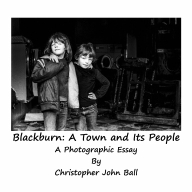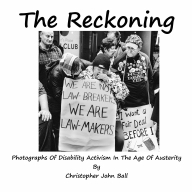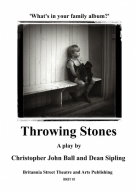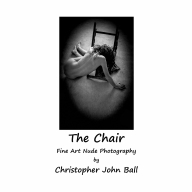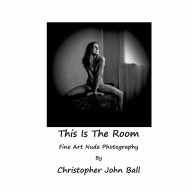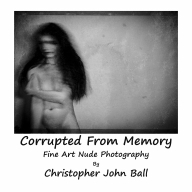
Plastic Cameras: Lo-Fi Photography in the Digital Age by Chris Gatcum
Published by Ammonite Press. 2012. ISBN: 978-1-90770-840-4

Tweet
Chris Gatcum is an award-winning photographer who has contributed articles on photographic technique to a number of publications. He has served
as technical editor for What Digital Camera? magazine and was a technical writer for Amateur Photographer magazine. In addition, he is the author of the books 'Creative Digital Photography: 52 Weekend Projects' and 'Light & Shoot: 50 Fashion Photos'. His latest book, 'Plastic Cameras - Lo-fi Photography in the Digital Age' opens with a short introduction that details how the advance of the digital camera, with their clean, 'flawless' instant images, has resulted in an appreciation, by many photographers, especially students and 'fine art' photographers, for the lo-fi aesthetics provided by some film cameras and, in particular, the cheap, plastic 'toy' camera. Gatcum looks at the 'plastic pedigree' of many of today's most popular 'toy' cameras, starting with original Diana, made by the Great Wall Plastics factory in 60's Hong Kong, and its 21st Century 'upgrade' by the Lomography company. Of course, no book on the topic of 'Plastic Cameras' would be complete without discussing the 'toy' camera that many of us first used, the Holga. Gatcum discusses the various models of the Holga that are available, detailing the pros and cons of each variation on the theme, including the Holga 120 TLR, the Holgaroid, the Holga 120 3D, Holga WPC pinhole camera and the various 35mm Holga cameras that are on offer.
The author moves on to discuss what is meant by the 'Lo-Fi aesthetic' and explains why the severe vignetting, extreme aberrations, uneven
sharpness, strange colours and light leaks, that are the 'signature' of a 'plastic camera', should be embraced. The book offers a practical guide to shooting with 'toy' cameras - with tips and advice on loading, advancing and unloading the film. Gatcum also discusses how to best use the, often very basic, viewfinders found on plastic cameras along with suggestions as to what modifications you can make to your camera to get the 'best' out of it. Of course the Holga and the Diana are not the only 'plastic cameras' available and Gatcum looks at what cameras, such as Blackbird, Recesky TLR, Halina Panorama, Action Samplers, Oktomat, Pop 9, Twinkle 2, Split-Cam, Robot 3, Action 4, Agat 18k, Ikinimo 110, Sprocket Rocket etc, have to offer. Each camera gets a section, including examples of images made using them, and their various quirks and charms are discussed. The final section looks at how your digital camera can be turned into a lo-fi plastic wonder via the use of a Lensbaby or Holga nd Diana lens attachments. There is also a small section on how to 'recreate' the plastic look in software.
'Plastic Cameras - Lo-fi Photography in the Digital Age' is, at 0.5 x 7 x 7 inches, a small, soft cover book but that doesn't stop its 192 lavishly illustrated pages from being joy to peruse. If you are new to the world of the 'plastic camera' then this is a good place to start. Those of use who are already smitten will still find much to hold our attention.
Review by Christopher John Ball
**** Rating
I have long favoured the use of 'Toy Cameras' in my own working practice and examples can be found here.
*Review Star Ratings If you have a photography related book you would like reviewing, including self-published material, email details to chris@cjballphotography.org.uk and I will happily consider doing so. The review will be hosted, free of charge, on this website and posted via Twitter and Facebook. All I ask in return is that a link be placed on your own site to the review on this website and, if used in any promotional material , I am credited as Christopher John Ball.
July 2024 Several books, featuring Christopher John Ball's photographs, are now available through Amazon or click on an image below to purchase via secure payments on lulu.com

Tweet


